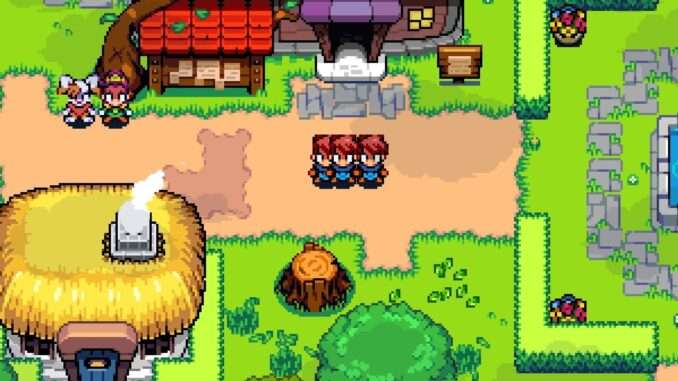
How to Make a Non-Linear Dungeon
What is non-linear and what is the difference
A linear and non-linear dungeon for the most part can be summarized pretty simply, a linear dungeon is one where there is a specific path the player MUST take if they want to progress, while a non-linear dungeon is one that has multiple paths the player can take to progress, making a non-linear dungeon is not an easy task, as you must carefully lay out your dungeon in a way where the player has choices but no matter what choice they take they can still progress.
In summary: Branching paths, these can vary alot depending on the length of the dungeon but its important to plan out your paths. Lets take an example from my most recent dungeon, the Time Palace, as soon as the player enters the room they immediately have a decision to make.

Its a good idea to give the players at least two open paths to explore as soon as they enter the dungeon, one of them, or in this case a third path, being blocked off through a switch or a key.
Due to the nature of Quest Masters room system, we cant have levers and “local” switches activate things in other rooms.
Options for blocking player progression below.
Global:
- Color Switch
- Small Keys/Key Doors
- Items (Fire Rod, Power Gloves etc)
Local:
- Lever
- Crystal Switch
- Timed Switch
- Floor Switches
- Any Other Conditions
If the player opts to go right in this section they will be met with a confusing puzzle, or a “global” item challenge, forcing them to go back and obtain the shovel.

Make sure the player can gain something from any path they take, the player should never have to waste their time going somwhere that doesent contain an item or key for them to progress. In this example, right after the player obtains the first key, they have a choice once again, in this example if the player goes forward, they can be rewarded for remembering the layout and finding the compass.
If they go right first, they can obtain the compass which can help them, even if just a little bit throughout the rest of the dungeon.

Now lets talk about the stuff that gets most people, branching paths with key doors, a simple example being this:
- Lanze has 1 key but 2 or more key doors to go into. The player should be forced to take all of the paths but shoulden’t be softlocked if they take one of the two paths. Make sure not to attempt to make too many branching paths within eachother or it will be very hard to prevent softlocking.
- Something I like to do while making my dungeon is mark which door contains what item to lay out my progression and branches. Obviously removing them when the room is finished.

In maker mode, small key doors should act as checkpoints for your thought process:
- In the time palace, after the player has obtained the first key and shovel, they have 1 small key accessible to them without any other items.
- With this small key they can enter one of two small key doors.
- The first door contains the fire rod.
- The second containing the path to progress and a small key, locked behind a challenge requiring the fire rod.
Now lets visualize the player progress.
Path One: 1st Door:
The player obtains the fire rod, and can use the fire rod to finish a previously uncompletable minecart challenge in order to open the second door and progress
Path Two: 2nd Door:
The player obtains a small key and can no longer progress until the open the 1st door, obtain the fire rod, complete the same challenge, and open the next key door.
Both paths lead to the same outcome but still make the player explore and find the different paths to progress, no matter which they take first.’

In short, look closely at the progression and try not to allow softlocks to happen lol




Be the first to comment